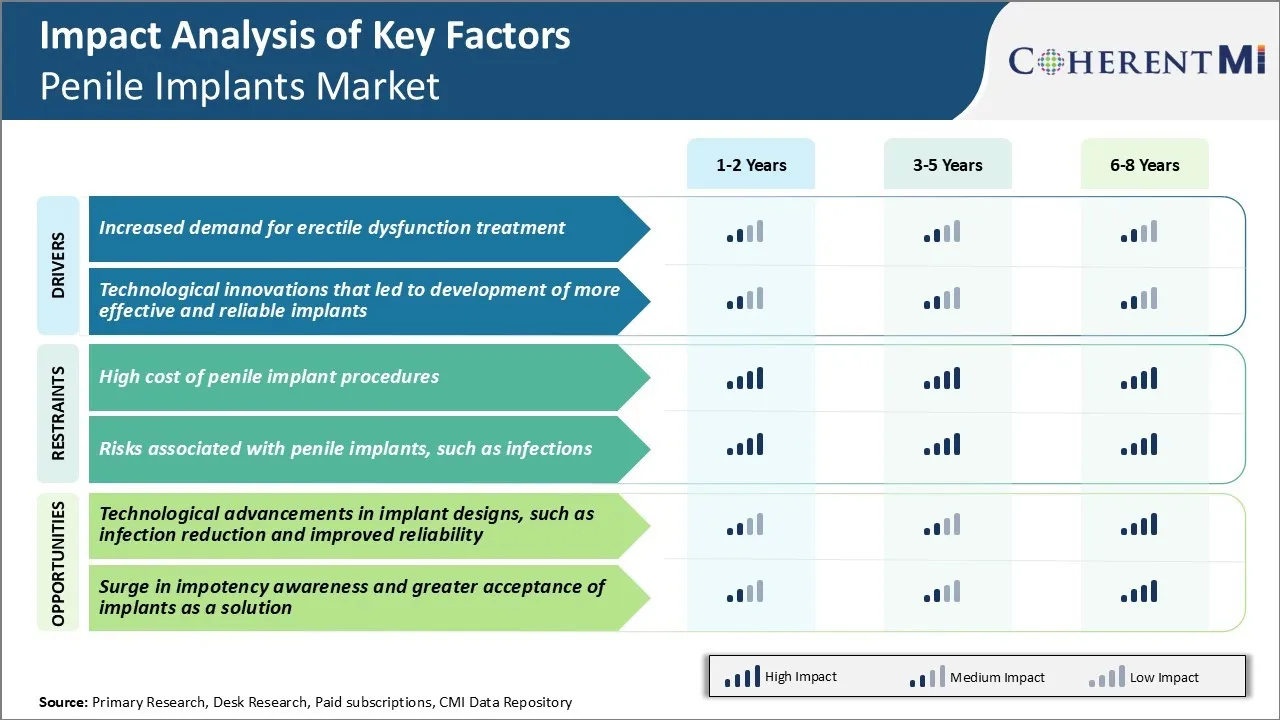Penile Implants Market Trends
Market Driver - Increased Demand for Erectile Dysfunction Treatment
The rising prevalence of erectile dysfunction among men has been a key factor driving growth in the penile implants market.
Lifestyle diseases are on the rise globally due to changing dietary patterns and sedentary behaviors. Conditions like diabetes and heart disease which can potentially lead to erectile dysfunction are affecting men at younger ages too. All these have combined to spike the patient population requiring medical intervention.
As men are becoming increasingly aware of treatment options available for erectile dysfunction, there is less stigma associated with the condition now. More men are willing to acknowledge they have a problem and are actively seeking help.
Penile implants offer a very reliable solution for men who do not respond adequately to oral medications or prefer a more permanent treatment method. The success rates of implants are very high and they restore natural function. This has made them an increasingly popular choice, providing a major push to the penile implants market.
Overall, as erectile dysfunction is impacting greater numbers of men and they are willing to address it proactively, it has amplified demand for options like penile implants significantly.
Market Driver - Technological Innovations Facilitating Development of Advanced Implants
Continuous innovation has played a vital role in shaping the penile implants market favorably. Over the decades, extensive research and developmental efforts have transformed penile implant technology. The designs have become more sophisticated with sturdier materials allowing smaller prosthesis sizes. Surgical techniques as well have been streamlined to make implantation simpler, less traumatic and recovery quicker.
A key breakthrough was the introduction of inflatable or hydraulic penile implants in the 1980s using hydraulics and a fluid system. These devices could be easily concealed inside the body when not inflated and provided a more natural appearance and feel. Most recent models now have advanced features to improve safety, versatility and performance. Some incorporate antibiotic coatings for enhanced biocompatibility and reduce risk of infection.
Technology continues to play a pivotal role in driving the penile implants space positively. Current research focuses on engineering more life-like prostheses using flexible materials, minimally invasive insertion techniques and adding sensing capabilities for a natural erection-detumescence cycle. They have transformed penile implants into a preferred treatment recourse, vastly increasing uptake and opportunities for manufacturers in the penile implants market.

Market Challenge - High Cost of Penile Implant Procedures
One of the major challenges facing the penile implants market is the high cost of procedures. Penile implant surgery is typically not covered by health insurance and can cost patients thousands of dollars out of pocket. The average cost of a penile prosthesis ranges from $8,000 to $15,000 per implant depending on the type and whether it is a single-component or multi-component device.
For many men suffering from erectile dysfunction, the high price tag associated with penile implants presents a significant barrier to treatment. The cost burden often leads patients to opt for less invasive yet potentially less effective treatment options like oral medications or pumps first before considering a surgical solution.
Device manufacturers and medical facilities performing the surgeries must consider ways to help offset these costs for patients in order to drive demand and make penile implants a viable treatment path for more men in need. Offering financing options or providing discounts to uninsured patients could potentially help address this challenge and make the procedure more accessible.
Market Opportunity - Technological Advancements in Implant Designs
One opportunity area in the penile implants market is the development of new device designs with improvements in infection reduction and reliability. Infections have historically been a challenge with penile prosthetics due to the insertion of foreign materials near the genital region.
Advances in antimicrobial coatings and improved sealing of implant components have the potential to significantly reduce infection risks. Design enhancements that allow for easier revision surgery in the rare case of mechanical failure could also give patients and doctors greater peace of mind.
Continued innovation to develop more natural feeling and fully inflatable prostheses may further increase patient satisfaction and uptake rates. Manufacturers investing in research to design penile implants with better outcomes have an opportunity to drive penile implants market forward through best-in-class technology.
Keeping pace with technological change will be important for companies targeting long-term growth within this sizable patient population in need of erectile dysfunction solutions.